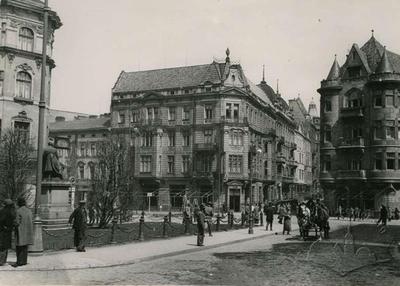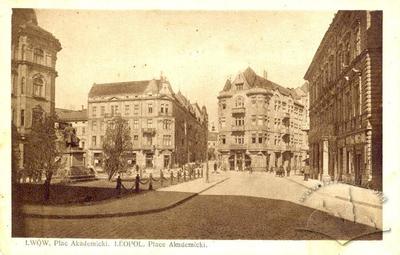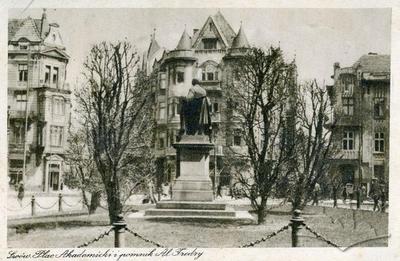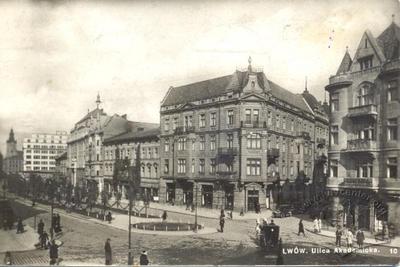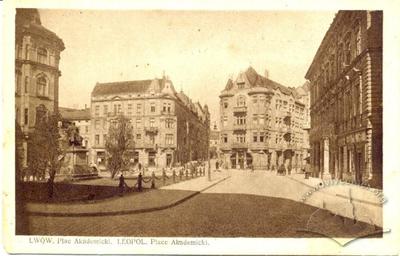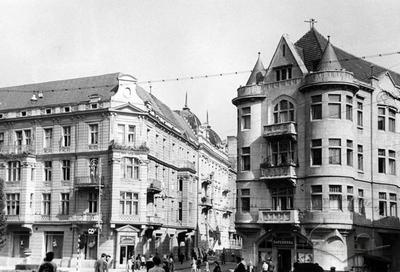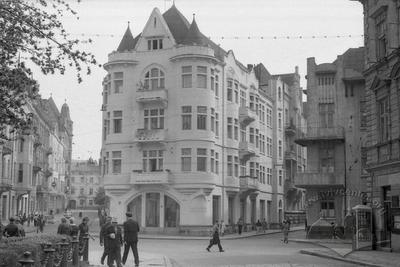Prosp. Shevchenka, 27 – hotel Atlas (former residential building)
This four-storied residential townhouse was constructed in 1909 under a project designed by architect Zbigniew Brochwicz Lewiński for Emil Weksler, an entrepreneur, in the modernized Gothic style. In 1909-1944 the ground floor premises of the house were occupied by the Szkocka (Scottish) coffeehouse where prominent Lviv mathematicians used to gather.
The townhouse is an architectural (protection no. 731-M) and historical monument (protection no. 1232).
Architecture
The townhouse is situated at the edge of the block, on a trapezium-shape end parcel. This corner plot borders on Fredra and Gertsena streets and on Shevchenka boulevard. The building’s expressive silhouette accentuates the southern boundary of this boulevard.
The four-storied townhouse is built of brick; reinforced concrete was also used in its construction. It has three façades with bays and half towers at the corners. The building is covered with a high roof and has a V-shaped configuration.
The interior planning belongs to the corridor and enfilade type; there are two apartments on each floor. The house can be entered through a narrow lobby with a coffered ceiling.
Modernized Gothic motifs were used in the building’s massive architectural forms by the architect.
Personalities
Stefan
Banach – a mathematician, a prominent representative of the Lviv mathematical
school.
Emil
Weksler – the building owner.
Zbigniew
Brochwicz Lewiński – an architect.
Stanisław Mazur – a
mathematician.
Stanisław Ulam – a
mathematician.
Sources
- Архітектура Львова: Час і стилі ХІІІ–ХХІ ст. (Львів: Центр Європи, 2008).
- Arсhitektura Lwowa XIX wieku (Kraków: Międzynarodowe Centrum Kultury, 1997).
- Dawna fotografia lwowska 1839–1939, red. A. Żakowicz (Lwów: Centrum Europy, 2004).
- Lwów: Ilustrowany przewodnik (Lwów: Centrum Europy; Wrocław: Via Nova, 2003).
Media Archive Materials
Related Pictures




















